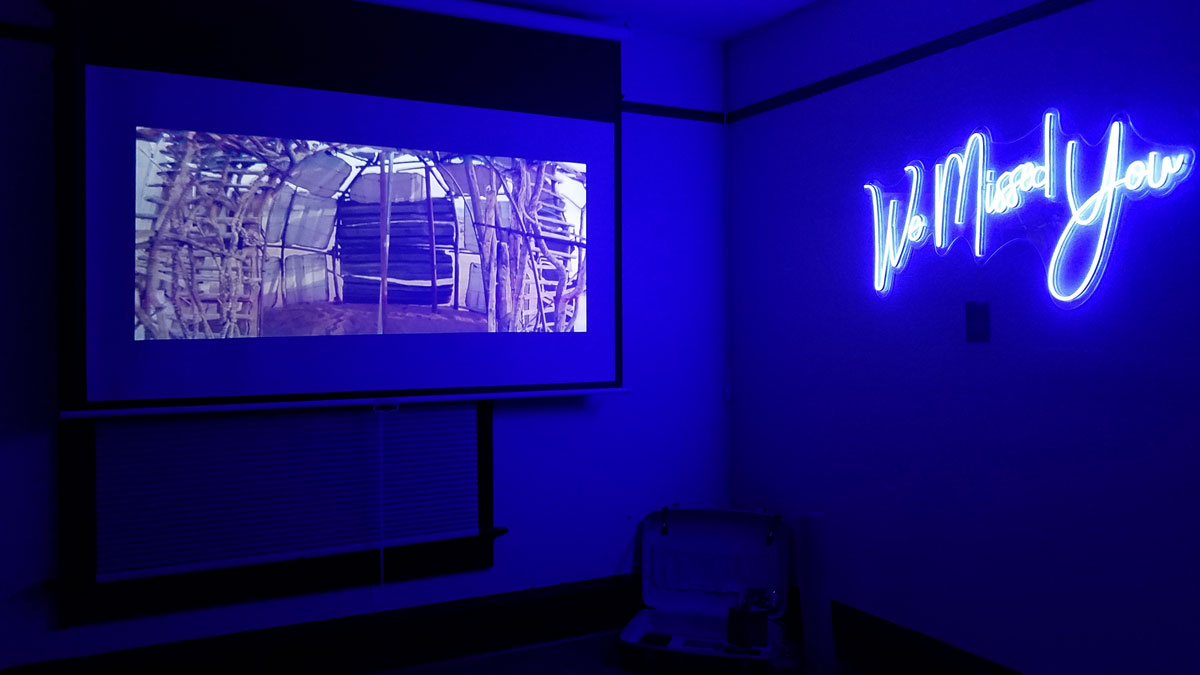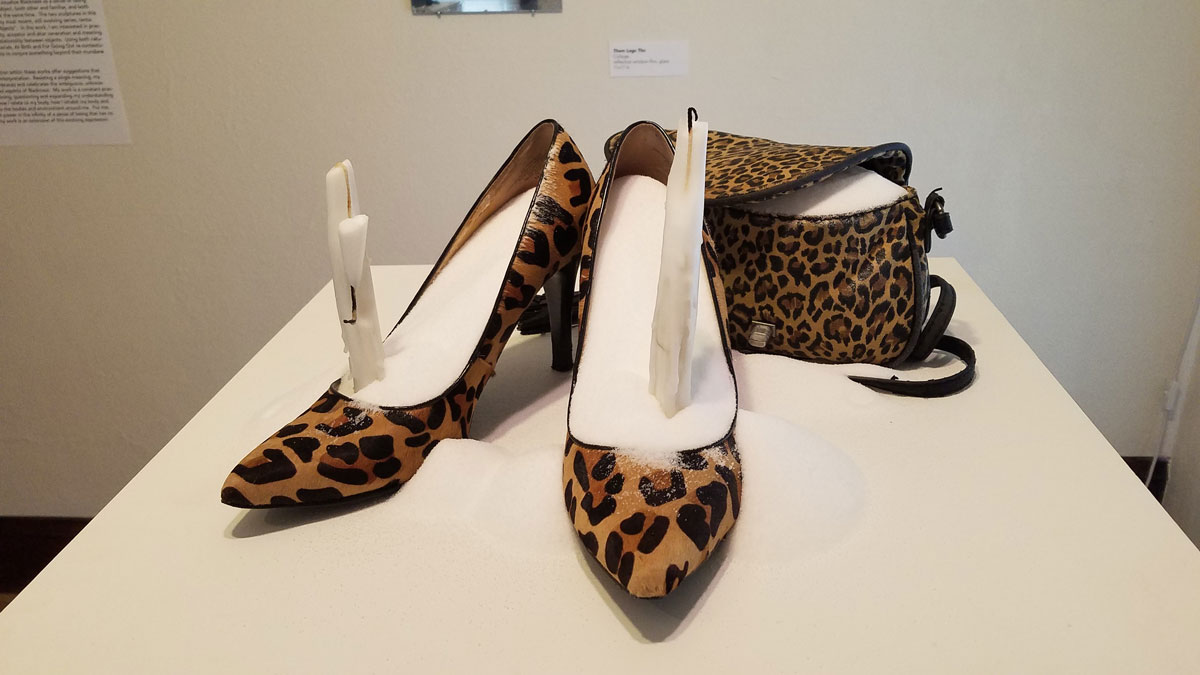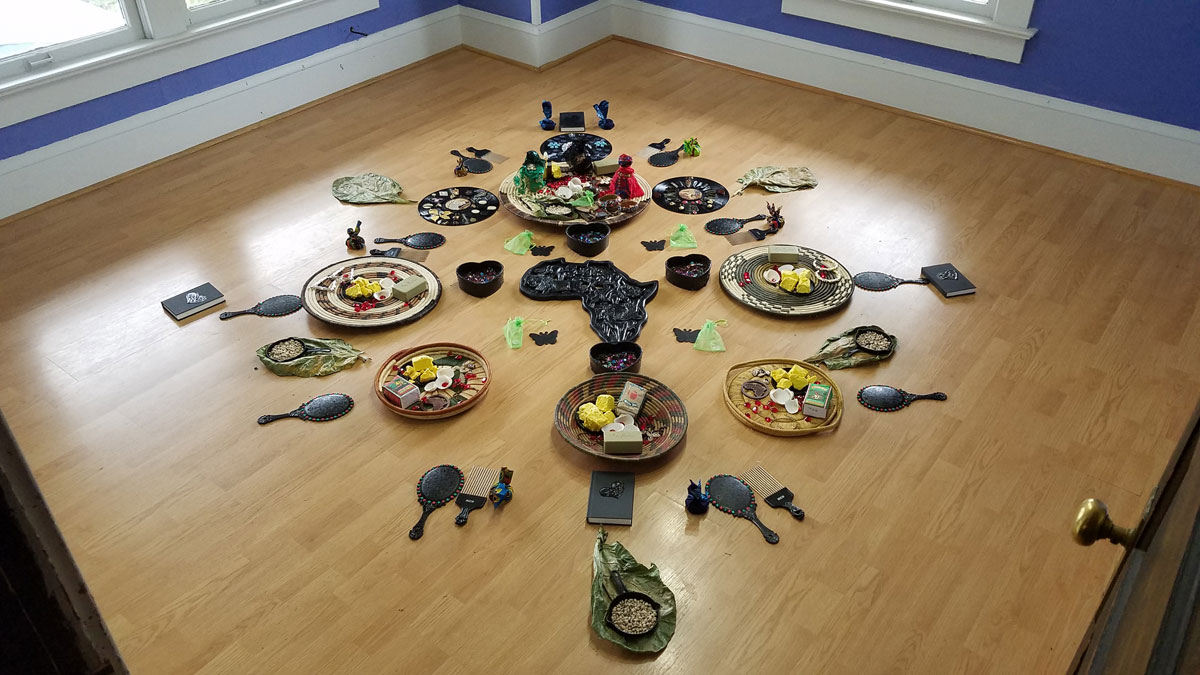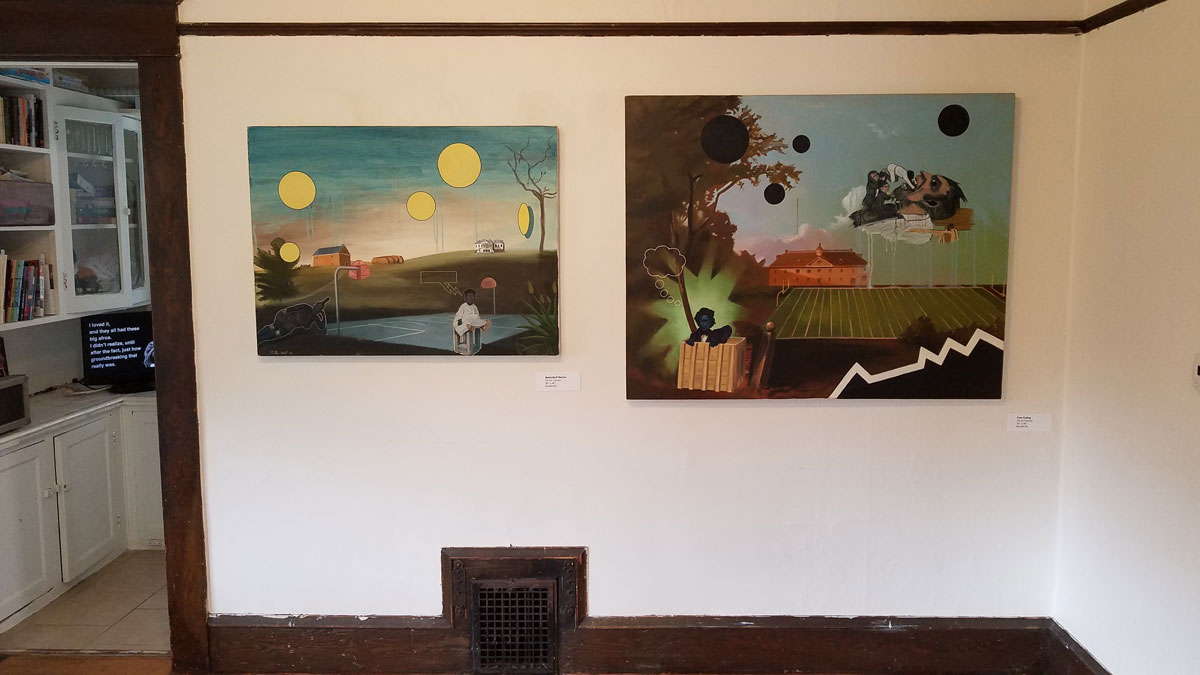travelish
Amir George, Jaleesa Johnston, Shurvon Haynes, Ronald Hall
Wa Na Wari, Seattle
wild guesses, the un-Googleable kind, are so rare, taking one too many has inadvertently endangered this activity. in contrast, their relative, the domesticated curiosity– an experience of a placed imaginary like Home Alone movies, Country music writ large, the concept of ‘retirement’ for example– endures. pilgrimages, migrations, vacations, commutes– it’s kind of funky *thinking* about modern movement when historically speaking, it was the M.odus O.perandi, of my Pasefika ancestors, a defining feature in a long thread of Living. at Wa Na Wari’s latest exhibition, the works presented serve as a lightning rod for the spirited engagement on travel, in the broadest and richest sense of the word.
inviting myself into Amir George’s installation “Abroad and Abound” on the 2nd floor of the Central District home gallery, i was immediately bathed in indigo. in that light sins were forgiven and fortunes changed. the neon emanating from George’s signage read “We Missed You” reminded me of SU’s Blue Diamond, early Olafur Eliasson installations, and a period of time i would sometimes go on evening walks after work on Capitol Hill to my former home in Beacon Hill along 12th avenue where Blue Nile Restaurant, an Ethiopian joint, would vibrate evil-eye warding blue hues. George’s video component skillfully arranges moments of black people in all states of transit. the locations depicted range from airport to desert, shifting from one surface to another geography to another state of mind.
a travel case containing a copy of Dion Fortune’s Applied Magic, some travel photos, Field Notes beside one very large candle renders a feeling that ‘in here’ there is something to be done ‘out there’. i highly recommend reading Zola Mumford’s apt writing on “Abroad and Abound” in the companion art gallery guide. it’s joy reading.
after an hour-ish enjoying the experience of George’s room, i made way to Jaleesa Johnston’s series Being/Conjured. remember what i said about language earlier? i found Johnston’s text description to be missing the abundant poetic qualities found in the materials she related, lacking the spatial sensitivity found in her placement of the reflective surface collage works. ingenuity is already apparent in Johnston’s sculptural play– should writing be emphasized again, i hope to view text that closely parallels those gestures in future works. Bernadette Thompson’s “money nails”, the play in a flourish of Sophia Tauber Arp’s thoughts, Deborah Anzinger’s exhibition “An Unlikely Birth”, and her contemporary Diamond Stingily’s work with hair come to mind when thinking of Johnston’s “Conjure Objects” sculptures. there is a psionic journey in the physical space, a continuous transiting from the flattening of ‘huite’ hegemony to the nexus of double consciousness to the infinity of Black thought, ever deeper, ever truer.
where Johnston’s thoughts struck me as multitudinous expanding inward across medium, Shurvon Hayne’s “The Healthy and Happy Mandala” felt singular in its expression– resonating a connection from African Americans in the diaspora to customs and heritage from the continent. nestled at the center of the room’s floor space, the mandala is comprised of gifts. daylight and light royal blue painted walls enshrine jewelry, Shea soap, cloth, beads, black eyed peas and something yellow (i honestly could not identify and should have asked about). i had a pleasant experience thinking how much peace and joy this work would bring and has already brought to black visitors as the mandala by extension of good will brought to me.
finally, there were Ronald Hall’s paintings. of them, i was taken by the pair of works hung together, “Basketball Diaries” and “Free Soiling”. there is symbolic meaning that i feel i am ill-equipped to comment on but here are some observations: both paintings feature a sporting facility in a bucolic environment, the black figures being depicted in the foreground; both paintings are surreal in quality; and both paintings let the oil paint drip, suggesting something *not cute* going on. from these details, i deduce a sort of retrospective outlook on African American migration from rural areas to urban environs, a layered poetic nod to the transference of sweat and labor from the plantation fields to literal basketball and football fields. maybe that’s a reach, so i’ll stop there. for transparency sake, some of my standard-bearers for painting in the past 8 years include Hamishi Farah and Winslow Laroche, black contemporary artists known for their work in painting medium whom i continue to think of. i am convinced of the Laroche-ian assessment that the Modernist art canon is just black + brown people’s aesthetics obfuscated of black + brown (namely black) presence. i say this to lay clearly my own ethics when considering art that is black centered. similar to Johnston, Hall’s paintings has a symbolic rigor that expands inward, a costly yet rewarding time travel.
recently i learned that global animal migrations across species are in decline (a Radiolab episode highlights this subject), though human activity seems to have maintained pace. i recognize the desire, the valid merits of being elsewhere and the necessity for travel– though i can’t help but feel like our time to be able to do such things has a limited window before ethical demands in response to climate change necessitate things like restrictive flights, need-based travel, etc. with austerity a ‘perhaps’, organizing like what is happening at Wa Na Wari could be the salve. if you’ve never visited– make a visit. there’s a really cool donation machine thing i’d never seen prior to going– i suggest testing it out. do a weekend staycation, attend an event there before traveling to the Peninsula or looking over embarrassing photos of yourself with a crush. travel, while you’re able, since as a friend mentioned to me years ago– we’re only temporarily able.




mario lemafa is an artist, writer, and independent organizer based in Coast Salish territory.